2025 Subaru Forester First Drive Review
Subaru redesigns its popular crossover SUV, building on a rugged and reliable reputation.
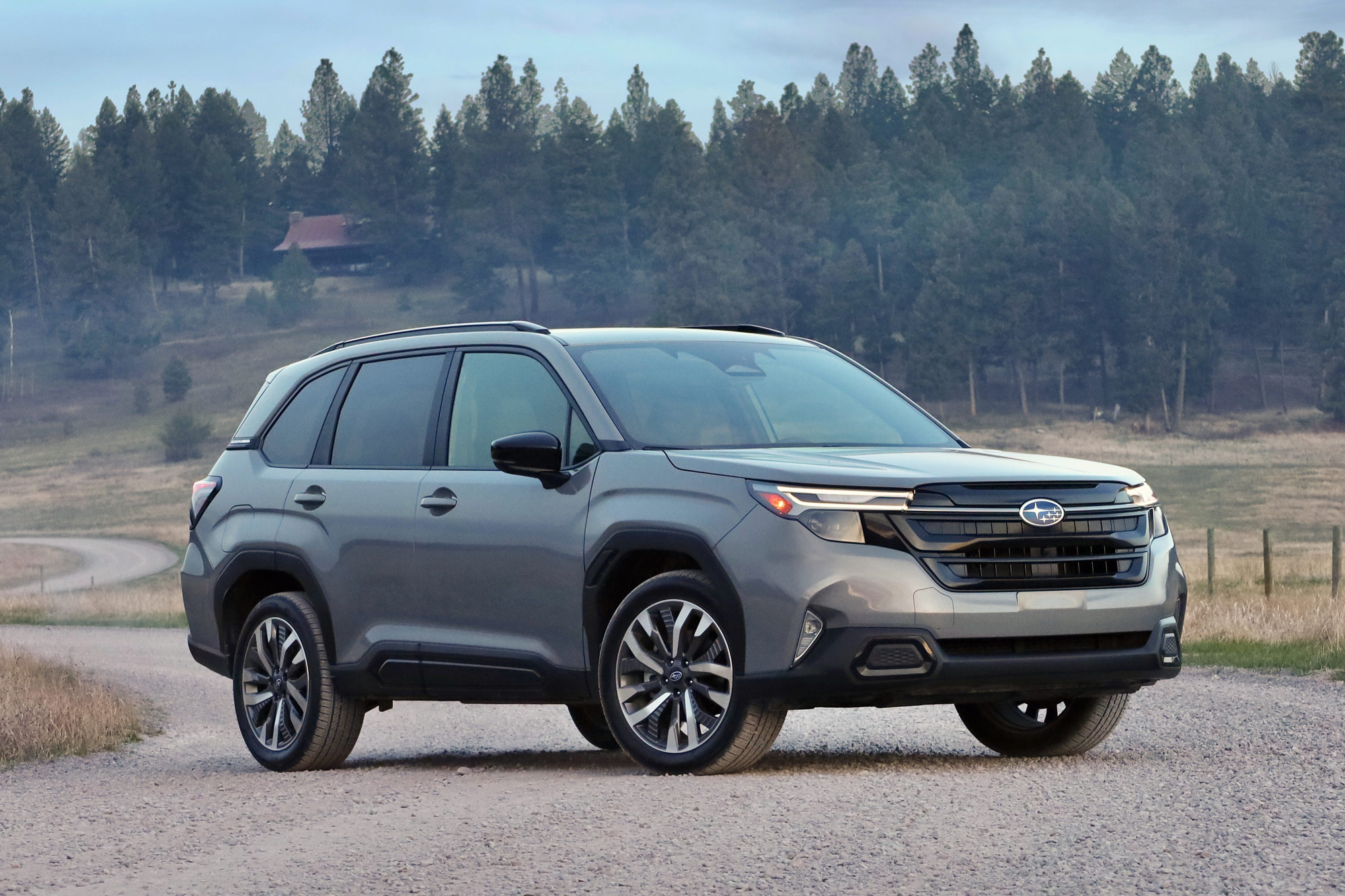 Jim Resnick
Jim Resnick
It may not be sexy or trendy, but the Subaru Forester compact SUV has long been a popular choice. Now, the sixth-generation 2025 Subaru Forester arrives with more refinement and additional technology, plus a standard all-wheel-drive system in a segment where AWD is frequently available only as an option.
As expected, the all-new 2025 Forester remains a utility-focused compact crossover SUV with generous interior space, excellent driver sightlines, and a 2.5-liter four-cylinder engine. It will go on sale in late spring 2024, and 2025 Forester prices range from the low $30,000s to the low $40,000s, including the destination charge.
Trim levels consist of Base, Premium, Sport, Limited, and Touring. Notably, Subaru will sell the previous-generation 2024 Forester Wilderness alongside the redesigned lineup for an undetermined period.
Within Subaru's lineup, the Forester slots above the smaller Impreza-based Crosstrek and overlaps with the Subaru Outback. Competitors include other compact crossover SUVs such as the Chevrolet Equinox, Ford Bronco Sport, Honda CR-V, Jeep Compass, Nissan Rogue, and Toyota RAV4.
I spent a day driving the redesigned 2025 Forester Touring in and around Missoula, Montana, mostly on hard-packed dirt trails, gravel, and a mix of snow and mud. It proved highly capable in poor conditions while offering plenty of room and utility inside, suggesting the Forester faithful will approve of Subaru's changes.
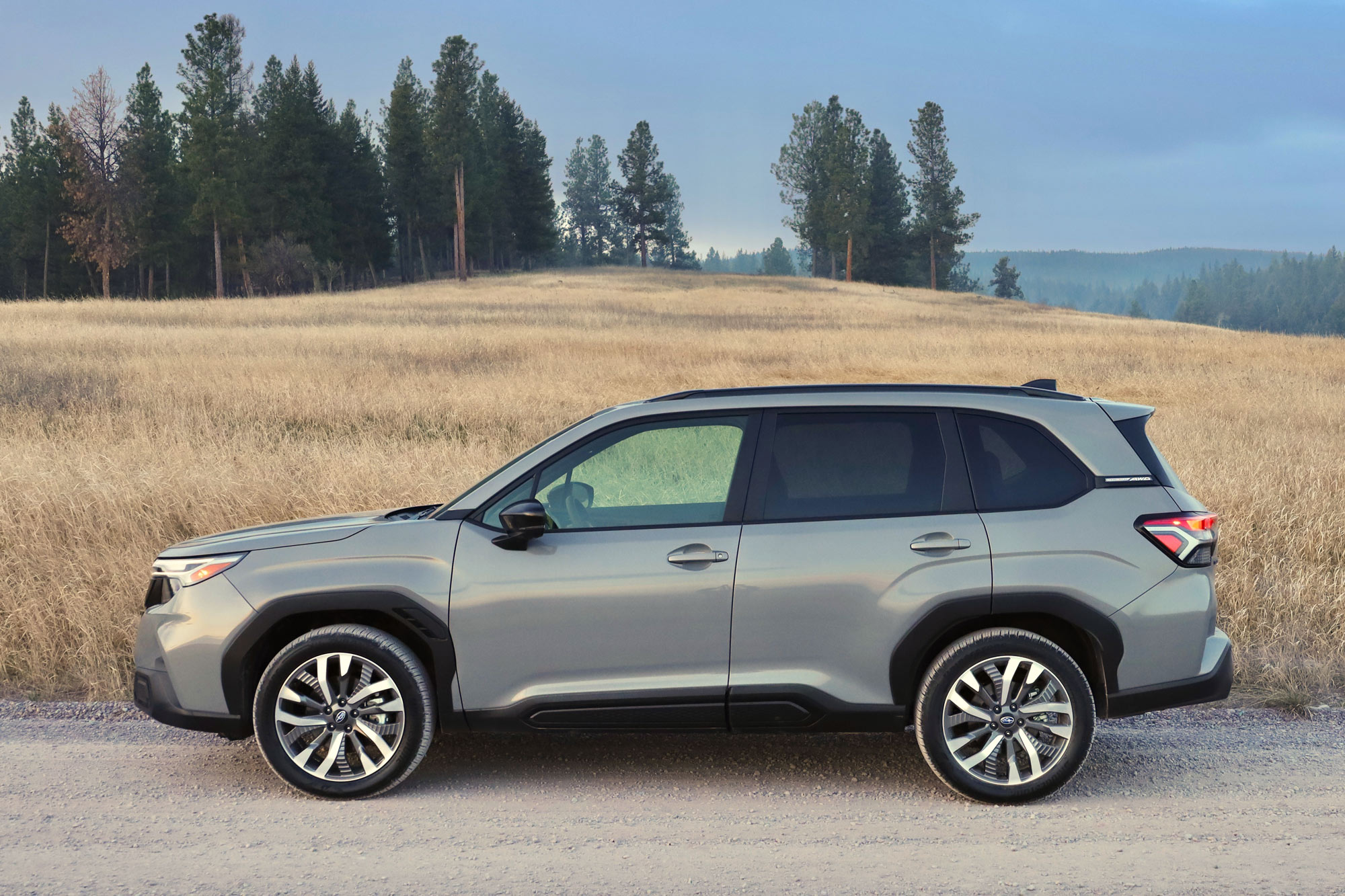 Jim Resnick
Jim Resnick
The New 2025 Forester Gains a Bit More Space
At a glance, the 2025 Forester might not seem dramatically different. The SUV retains the previous-generation model's general shape, dimensions, and purpose, including an upright profile to offer generous room for passengers and a wide, boxy cargo area.
Look closer, and you'll spot a new prominent grille flanked by better-integrated LED headlights. When viewed from the driver's seat, the flat hood terminates in creased forward peaks, markers that help place the vehicle's front corners when maneuvering in tight quarters, from city parking garages to confined trails.
While the sides of the new Forester appear somewhat unchanged, the wheel arches now have corners, much like Jeep models and the Toyota RAV4. In addition, the new Forester grows small air ducts at the trailing edges of the front wheel arches to reduce aerodynamic lift and contribute to greater stability.
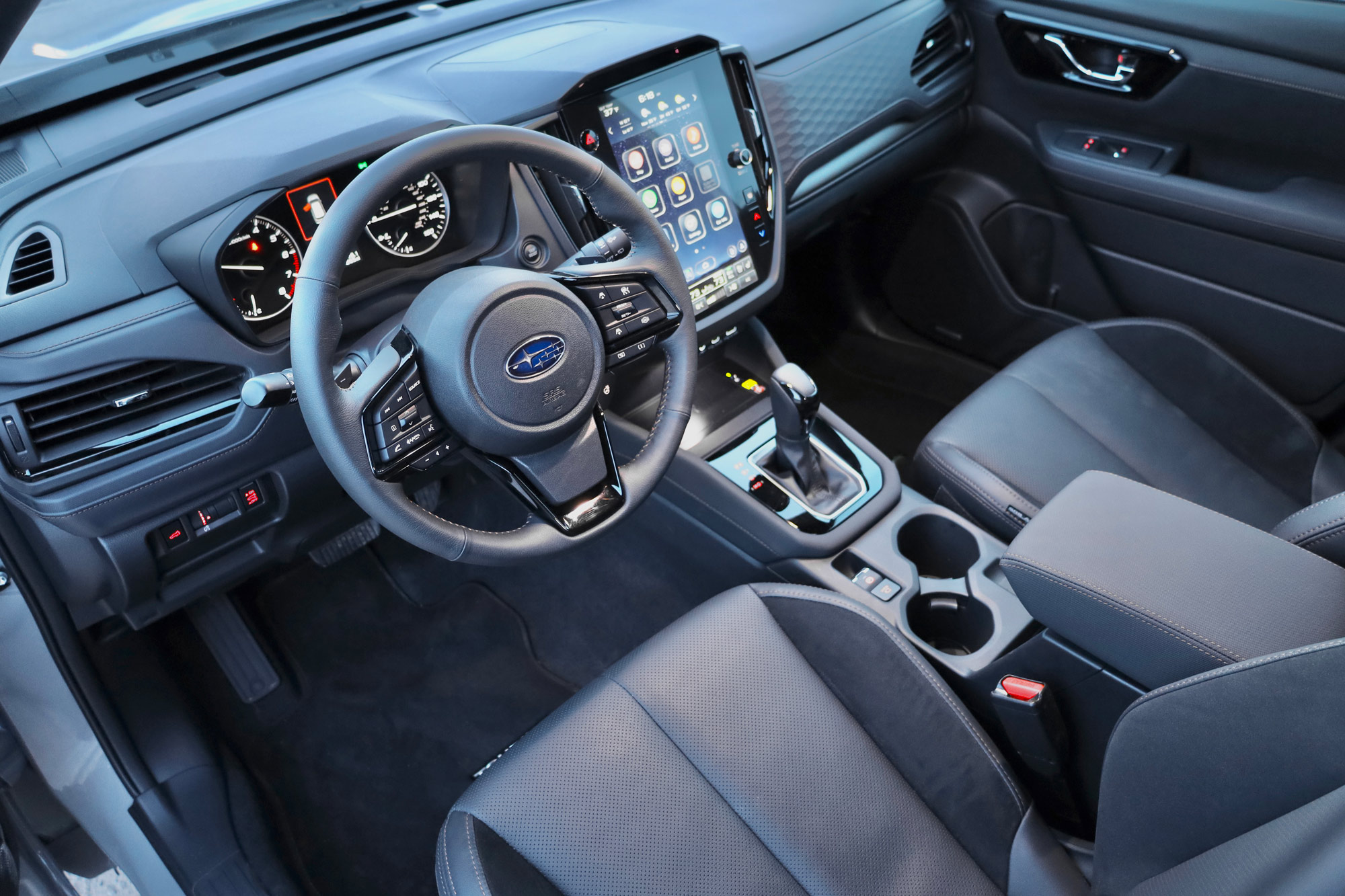 Jim Resnick
Jim Resnick
Inside, Subaru adds its latest EyeSight advanced driver-assistance systems (ADAS) to the 2025 Forester, and most versions of the SUV get a larger 11.6-inch touchscreen infotainment system. Subaru also says the interior is quieter than before, and for the first time the Forester offers a hands-free power liftgate granting access to the cargo area.
Under the skin, Subaru wrings a hint of extra torque from the 2.5-liter four-cylinder engine, which retains its signature horizontally opposed, or boxer, design. It's hooked to a continuously variable automatic transmission (CVT), which directs output to all four wheels through Subaru's full-time AWD system.
Security and Stability on the Road, Even When the Pavement Ends
My test vehicle for this review was a 2025 Forester Touring. As the top trim, it has leather, heated and cooled front seats, an 11.6-inch infotainment display, an 11-speaker Harman Kardon stereo, and a dual-function X-Mode driving program to improve traction in poor conditions. Including the $1,395 destination charge to ship the Forester from its Gunma, Japan, assembly plant, the final bill for this Forester Touring came to $41,390.
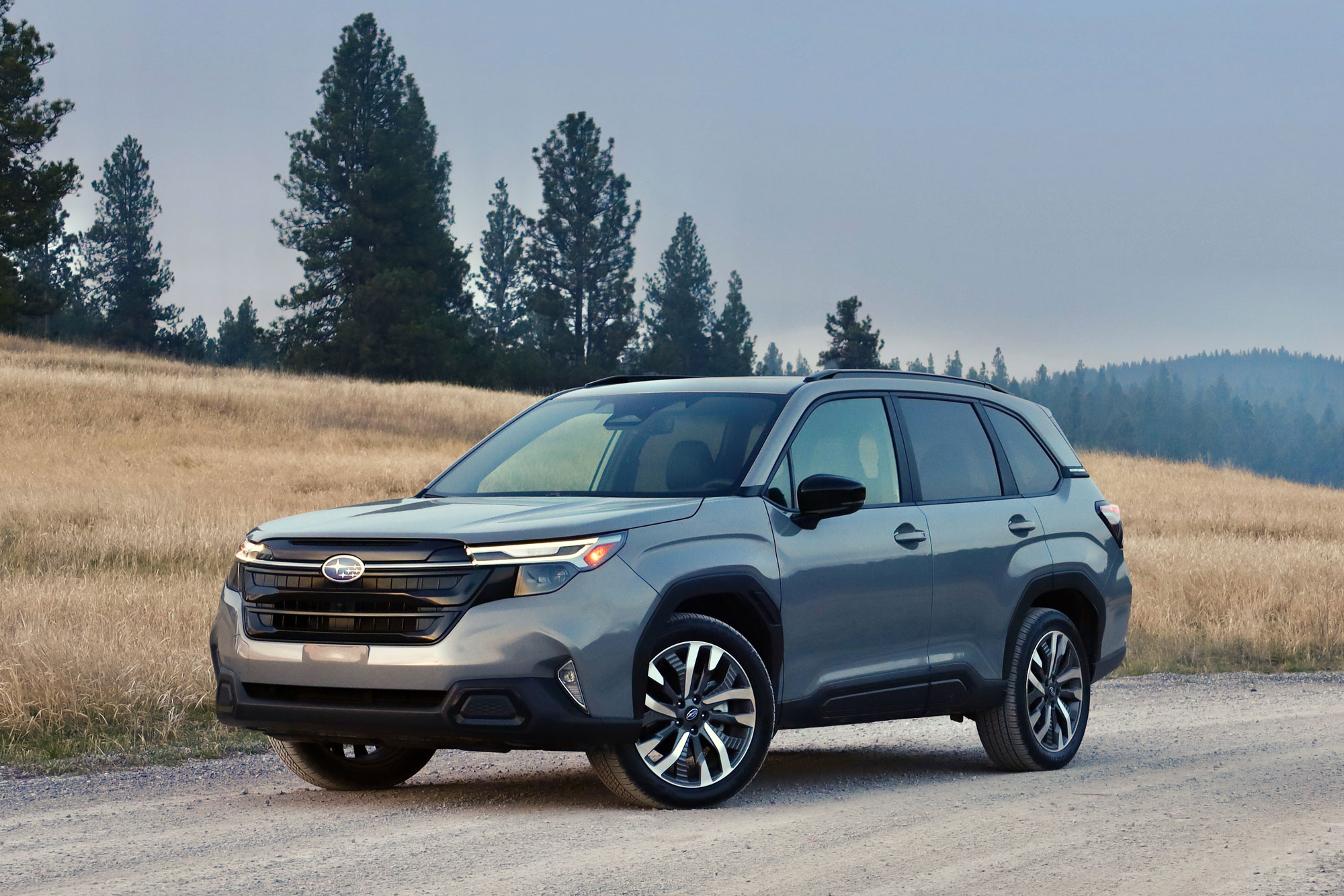 Jim Resnick
Jim Resnick
The Forester's updated engine produces 180 horsepower and 178 pound-feet of torque, compared with the last generation's 182 horsepower and 176 lb-ft. Notably, that torque now peaks at 3,700 rpm rather than 4,400 rpm, meaning the Forester should feel slightly more energetic when accelerating. Based on my experience, this drivetrain is fine when traveling dusty trails, but the droning CVT and modest power make on-road performance merely acceptable.
What the Forester lacks in straight-line acceleration luster, it makes up for with long legs. With a fuel capacity of 16.6 gallons, the Subaru's maximum 26/33/29 mpg city/highway/combined EPA ratings mean it should supply about 540 miles on a tank.
The EPA rates the Touring model I tested at 25/32/28 mpg. I saw a lower average fuel-economy figure of 24.7 mpg during my time behind the wheel, but this reflects some off-roading time. A more conventional drive would show better results.
Meager power aside, I instantly noticed the Forester's standard active torque vectoring at work on dirt and gravel roads. When rounding a bend, the system sends more power to the outside wheels since they have better traction, turning the SUV more after you've dialed in some steering, almost like a subtle secondary steering input.
In addition, the suspension delivers comfort-focused ride and handling qualities, fostering a sense of security when driving the Forester. Traction is secure on slippery surfaces. Visibility is above par, thanks to great sightlines from the driver's seat. There's a feeling of security knowing that past Forester models have traditionally earned high marks in crash tests. Historically, the Forester is a 17-time Insurance Institute for Highway Safety Top Safety Pick, though as of publication, the IIHS hasn't evaluated the 2025 model.
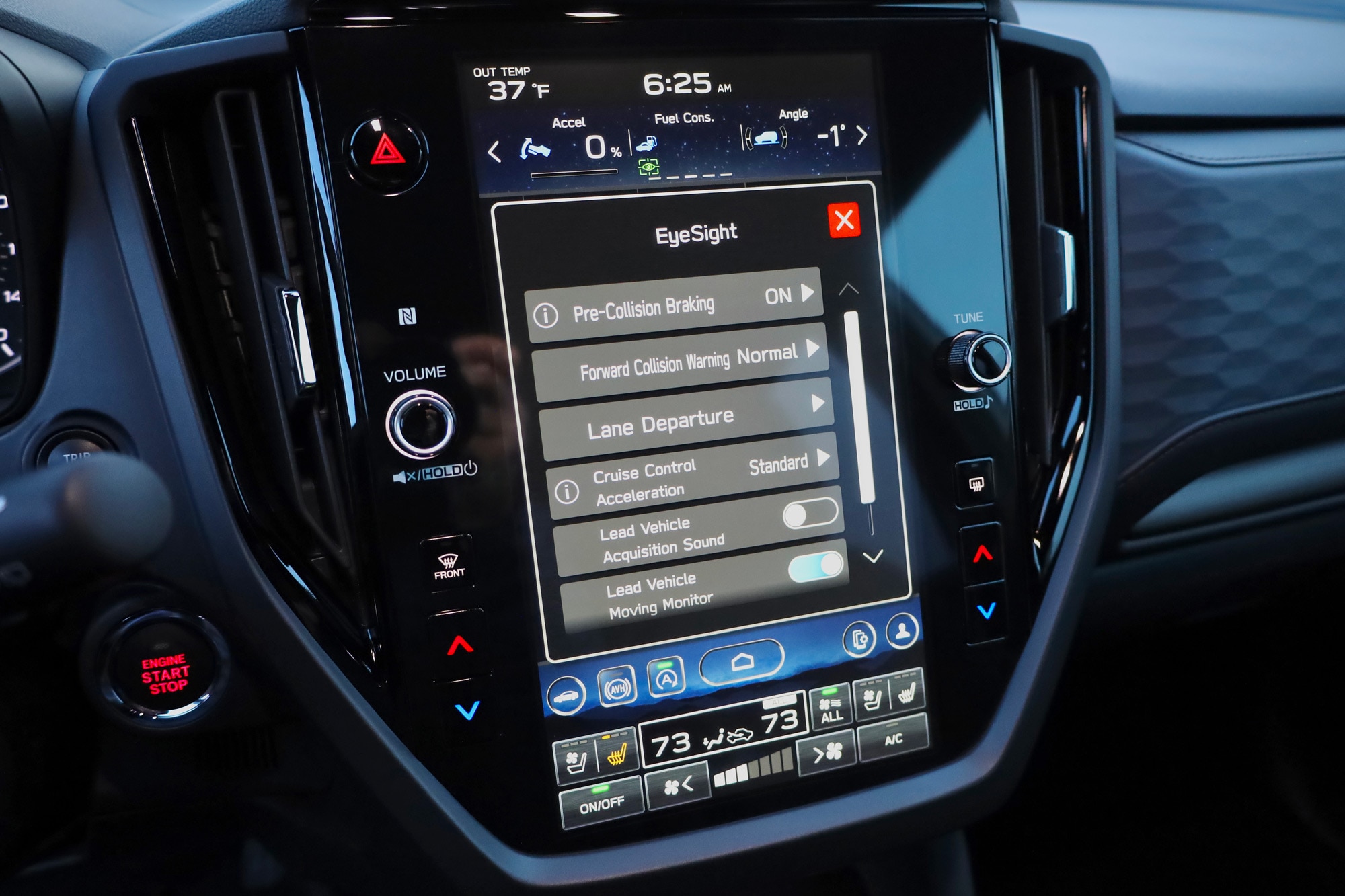 Jim Resnick
Jim Resnick
Lots of Driver Safety Tech Is Standard
Subaru will equip every 2025 Forester with an updated EyeSight ADAS package that includes adaptive cruise control, lane-departure warning, lane-keeping assist, and lane-centering assist. With no perceptible wandering, that lane-centering tech worked well in the Forester Touring I drove. Its resistance to driver override, however, is unusually stubborn.
Subaru's Emergency Stop Assist system is standard on every 2025 Forester. Active when using the adaptive cruise control, it can detect an unresponsive driver, stop the vehicle, activate the hazard lights, and call emergency services.
Forester models equipped with blind-spot monitoring, rear cross-traffic alert, and lane-keeping assist also receive Automatic Emergency Steering, which can help you avoid collisions with objects in your lane at speeds up to 50 mph. The test vehicle additionally had reverse automatic braking and Subaru's DriverFocus distraction mitigation system. DriverFocus can also enhance the Emergency Stop Assist to determine if a driver is asleep or suffering a medical issue.
 Jim Resnick
Jim Resnick
All Foresters except the base model also get a new 11.6-inch touchscreen system with wireless Apple CarPlay and Android Auto connectivity as well as smartphone charging. It took three attempts to pair my iPhone to the system, but reconnecting took no time.
Sadly, the voice recognition feature requires using specific phrases, unlike more advanced systems that interpret natural speech. You can solve that by using Apple's Siri or Google Assistant after pairing your phone.
Comfort is king in the 2025 Subaru Forester. The front seats provide lots of room, and with the driver's seat adjusted for my 6-foot-1 frame the back seat had plenty of clearance for my knees. Up above, headroom proved ample.
The rear doors also open very wide, allowing excellent ingress when loading children, pets, or bulky items into the back seat. You can imagine pets are welcome, with raised paw prints molded into the rear door kick panels.
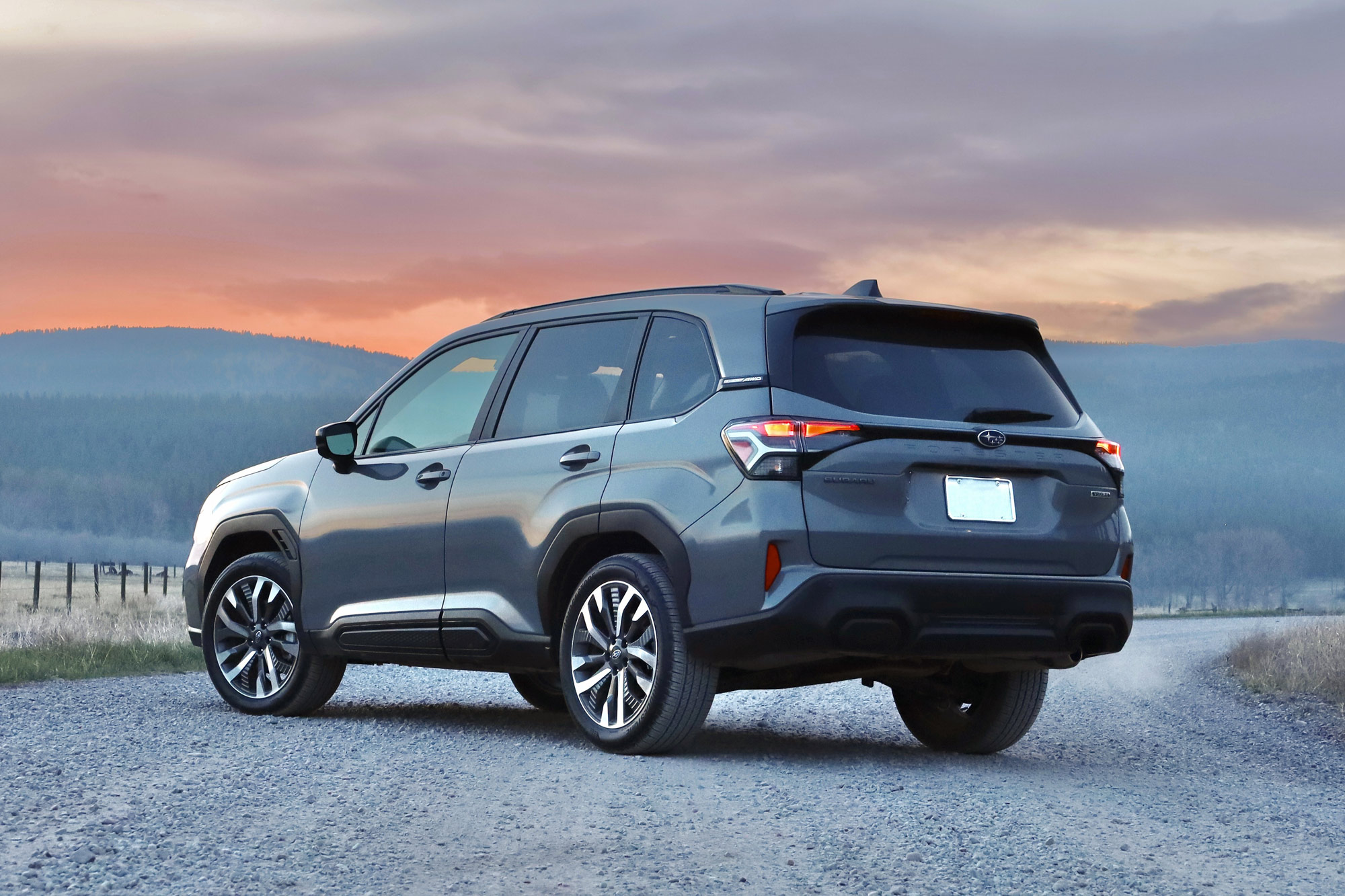 Jim Resnick
Jim Resnick
A Compelling, Feature-Rich, Tech-Friendly Compact SUV
For various reasons, small and adventurous families will likely bond with the new 2025 Subaru Forester. It offers generous interior space and comes with numerous standard safety features. Although there's no hybrid — yet — the large gas tank yields a long driving range. It's also quieter and more comfortable than the outgoing Forester, but retains its off-road ability.
Competition in the compact crossover SUV market is unyieldingly stiff. But the new Forester incrementally improves on a recipe that has worked for decades, adding more refinement without subtracting what makes the SUV a compelling choice.
Subaru provided the vehicle for this 2025 Forester review and paid for airfare, lodging, and meals during the evaluation period.
Written by humans.
Edited by humans.
 Jim Resnick
Jim ResnickFrom racing exotic sports cars, to ranking new cars, to peeling back layers of cover up in an exhaust emissions scandal, Jim has chronicled the automotive sector for decades. Jim has also worked inside the corporate headquarters of three carmakers, and therefore understands how the automotive sausage is really made. But Jim’s affinity for vehicles takes a back seat to finding the truth and the cultural implications of modern transportation. He has also lectured at universities to engineering and policy students and faculty on the industry’s relationship with legislation in the wake of the diesel exhaust emissions scandal several years ago. Put simply, Jim reports on autos, mobility, tech, car culture, and the traffic jam of topics within.
Related articles
View more related articles